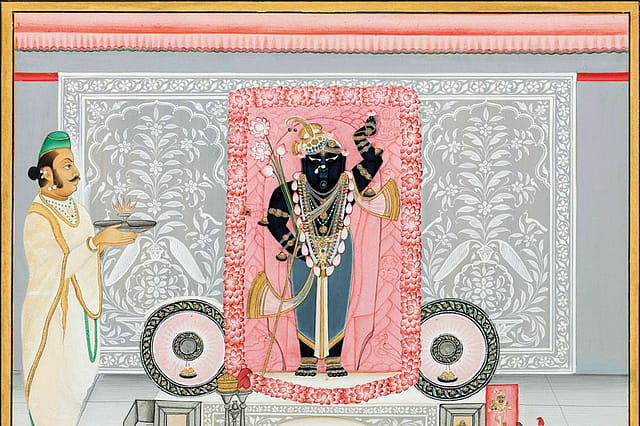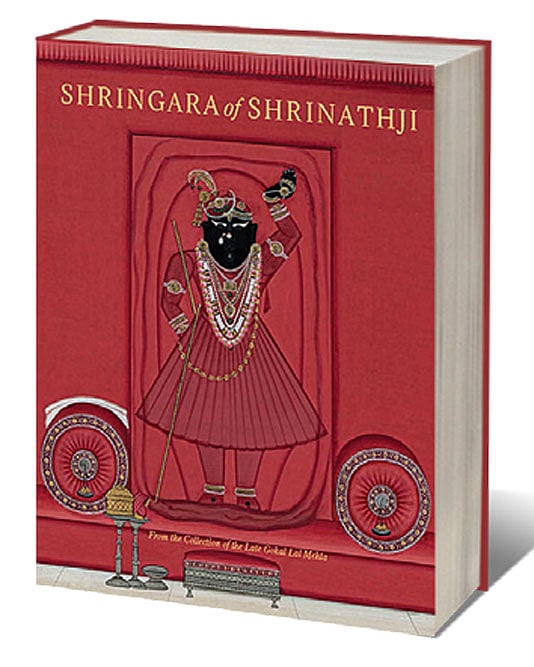The Art of Adornment

THE POET WH Auden once wrote, “Love requires an object.” For those who have been summoned by the grace of love, or Pushtimarg, to the portals of Shrinathji at Nathdwara, the object could be enshrined in this magnificent volume of previously unpublished miniature paintings from the collection of Gokal Lal Mehta. According to legend, Shrinathji was transported from the Vajra region by Vallabacharya the original preceptor of the Pushtimar and installed at the end of his journey at Nathdwara, near Udaipur.
Do we include the rest of the Auden poem ‘Heavy Date’ where the poet writes, “Anything will do. / When I was a child, I / Loved a pumping-engine, / Thought it every bit as / Beautiful as you.”?
If not for any other reason, this poem reminds us that Shrinathji at Nathdwara is Krishna in the form of a small boy. He is a podgy figure in black stone. One hand is raised to suggest that this was the arm that saved the people of Govardhan from the devastating rainstorm and swirling waters. The right hand is lightly held close to his waist. The strangely elongated eyes with the iris pointing downwards are like lotus petals, according to some observers, looking down at those who come to seek his blessing at his feet. Others compare them to curved daggers.
The charm of the collection of exquisitely reproduced miniature portraits with enlarged insets, is to enable the viewer to view each aspect of the adornment of Shrinathji and decide how else to interpret the images. The atmosphere is choreographed in a variety of light and shade to reflect the seasons and the festivals that mark them.
The aspect of play, or Lila, is also suggested in the term “Shringara”. It accords with the other rituals that accompany the worship of Krishna idols in other temples. The offering of worship happens through performance, or food prepared on special occasions. What is particularly significant at Nathdwara is the changing paraphernalia of dress, whether it is garlands, or headgear, or ornaments, or other framing accoutrements, which speak of a highly evolved aesthetic that is contained in the term “Shringara”.
As Amit Ambalal, artist and long-time collector of the memorabilia, reminds us, none of these apparently separate aspects matter except in one regard. They are meant to individually, or collectively awaken the inner eye. As he writes in the book, “In Pushtimarg, Parabrahma, the Supreme Power, is Sat, Chit and Ananda—existence, pure consciousness and bliss.”
Those who visit Shrinathji at Nathdwara in the Mewar region of Rajasthan are already in a state of devotional expectation even before they reach the feet of the familiar image at the sanctum. What makes the collection of portraits remarkable is that it introduces the viewer to an entire universe of different moods and aspects of this particular form of worship, without diluting its impact. It could be said that the images distil the impulse of bliss through a dissertation on beauty. One does not have to be a follower to be able to experience these sentiments.
Part of the reason is that they are from what Ambalal calls the Golden era of Nathdwara under Govardhanlalji (1862-1934) the priest-custodian who is seen standing by the side in most of the paintings. Just as these impresarios created what might be called “performance art”, Vikram Goyal has extended their vision into a sumptuous celebration of the art of adornment.

